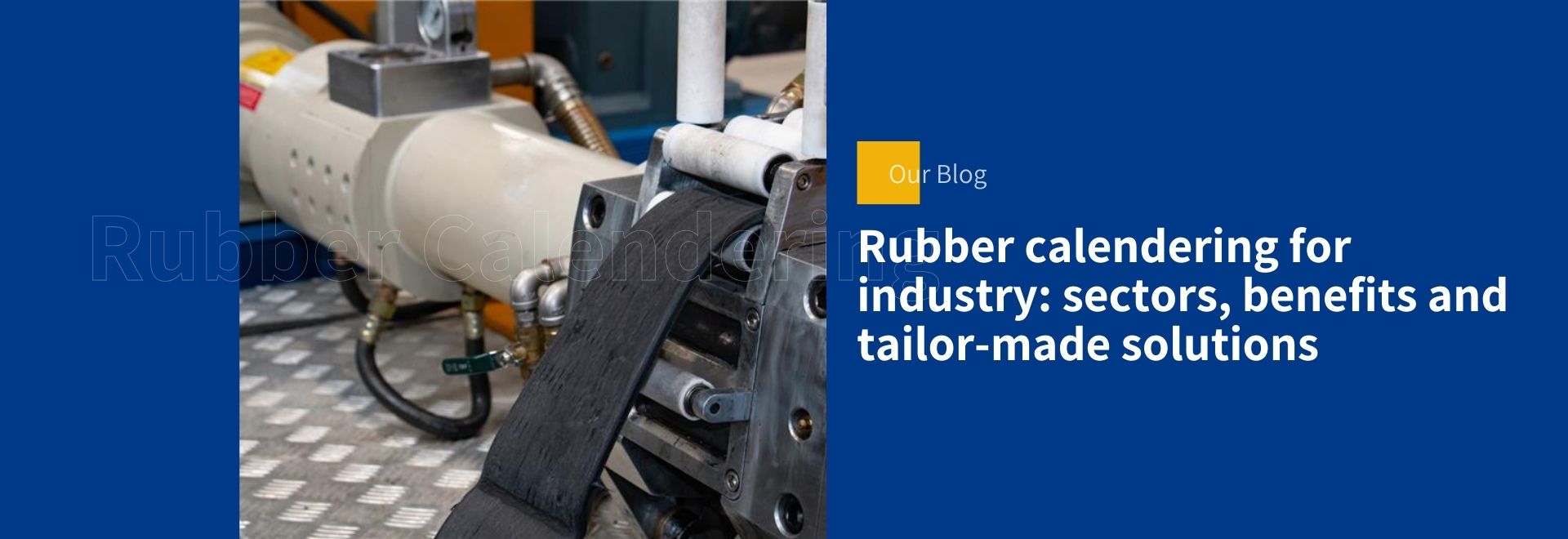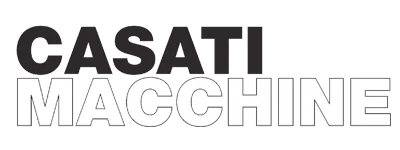
Behind every perfectly uniform gasket, every durable rubber sheet, and every technical component that requires maximum precision, there is a process that makes the difference: rubber calendering. It’s not just about compressing a material, but about transforming it consistently and reliably, ensuring production standards that extrusion or molding alone cannot guarantee.
In a market where quality must coexist with productivity, calendering becomes a strategic step for industries such as automotive, construction, and medical. And choosing the right calender is not a detail: it is what allows companies to reduce waste, maintain tight tolerances, and ensure continuous production.
Index
- What is rubber calendering?
- What are the advantages of rubber calendering for industry?
- Which industries use rubber calendering?
- What is the difference between rubber calendering and other processing methods?
- How to choose the right machine for rubber calendering?
- Why choose Casati Macchine for rubber calendering?
What is rubber calendering?
Rubber calendering is an industrial process that uses a machine called a calender to transform rubber into sheets or slabs of uniform thickness. The material is passed through a series of heated rollers that compress, stretch, and homogenize it.
This technology is highly valued because it ensures products with consistent characteristics, which are essential to guarantee quality and reliability. Compared to other processing methods such as extrusion or molding, calendering delivers greater precision in thickness tolerances and a superior surface finish.
For this reason, it has become an essential stage in many industries: from automotive, where durable gaskets and coatings are required, to construction, medical, and energy.
What are the advantages of rubber calendering for industry?
Rubber calendering offers numerous advantages that make it a strategic choice for many manufacturers. First of all, it guarantees uniform thickness: the resulting sheets and slabs have minimal tolerances, which is crucial for precision technical components.
Another strength is productivity. Thanks to the continuity of the process, large volumes can be produced in a short time, optimizing production costs and minimizing waste. In addition, the smooth and regular surface obtained through calendering reduces the need for further processing, saving both time and resources.
Finally, calendering ensures application versatility: from tires to conveyor belts, from gaskets to coatings, this process adapts to multiple industrial sectors that demand high quality standards.
Which industries use rubber calendering?
Rubber calendering is applied across many industrial sectors, thanks to its ability to produce versatile semi-finished products with consistent properties.
- Automotive: gaskets, interior coatings, technical components, and tires that require uniformity and durability.
- Construction: waterproof membranes, insulation materials, and surface coatings, essential for durability and protection.
- Medical: sheets and films used for devices and applications where hygiene and precision are crucial.
- Energy and heavy industry: conveyor belts, drive belts, and coatings for plants that must withstand extreme conditions.
In each of these sectors, calendering enables companies to maintain high quality standards and continuous production — factors that directly impact competitiveness.
What is the difference between rubber calendering and other processing methods?
Rubber calendering differs from other processing methods such as extrusion and molding, offering specific advantages in terms of precision and quality.
- Calendering: produces sheets and slabs of uniform thickness, with minimal tolerances and smooth surfaces. Ideal for continuous production and components that require dimensional stability.
- Extrusion: allows the creation of complex profiles and specific cross-sections, but does not always guarantee the same precision in thickness over large surfaces.
- Molding: useful for manufacturing finished parts with defined shapes, but less suitable when large and continuous volumes of semi-finished products are required.
Calendering does not completely replace other processes but complements them. Its strength lies in the ability to combine productivity and uniformity, characteristics that often make the difference in industrial applications.
How to choose the right machine for rubber calendering?
Choosing a rubber calender cannot be random: it depends on technical and production variables that directly affect the final result. Key criteria to consider include:
- Required thickness and width: calenders must ensure the necessary tolerances for the intended product.
- Production volume: for continuous, high-speed production, it is essential to opt for robust machines designed to withstand intensive cycles.
- Flexibility: some calenders allow quick and precise adjustments, ideal for companies working on varied projects.
- Technology and automation: advanced control systems simplify monitoring and process optimization, reducing errors and waste.
- Service and maintenance: a reliable partner provides not only the machine but also the support needed to keep it efficient over time.
Relying on an experienced manufacturer means reducing risks and improving production performance.
Why choose Casati Macchine for rubber calendering?
Investing in a machine for rubber calendering means choosing quality as a driver of competitiveness. But purchasing a system is not enough: you need a partner capable of providing expertise, support, and tailor-made solutions.
Casati Macchine has been working alongside rubber processing companies for decades. With a focus on technological innovation, customized design, and ongoing support, we ensure reliable, high-performance machines built to last.


